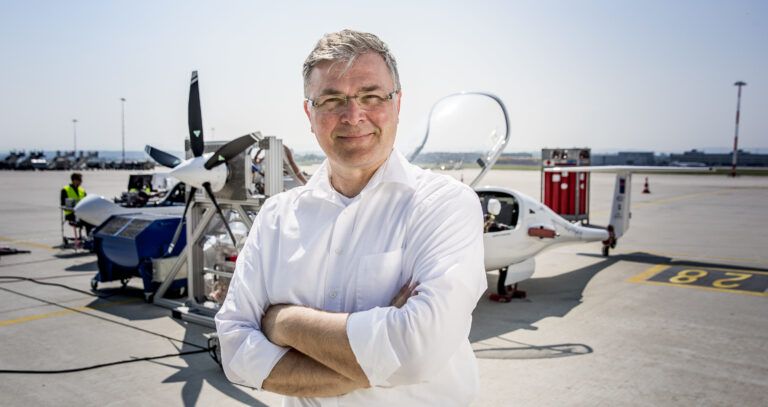Words by Paul Eden
It is important to be very clear about the technological drive behind Stuttgart-based H2FLY. The air taxi, business and regional aircraft concepts shown in the ‘Vision’ section of its website illustrate likely future applications of the company’s technology but H2FLY is all about power, specifically hydrogen-fueled powertrains for aircraft.
Flight test has always been a critical element in H2FLY’s campaign. It employs the HY4, a unique aircraft modified from the Taurus G4 manufactured by Pipistrel. The Slovenian OEM built the twin-fuselage, four-seat G4 based on its Taurus Electro electrically powered self-launching glider as a testbed for its own electric powertrains before its modification in 2016 for hydrogen power. The aircraft flew with a hydrogen powertrain for the first time in September 2016 and has continued as H2FLY’s workhorse trials platform.
On April 13 2022, H2FLY achieved a significant milestone when the HY4 reached 7,230ft, thought to be a record altitude for a hydrogen-powered passenger aircraft. Demonstrating the reliability of both the aircraft and its powertrain, the company had completed the first ever hydrogen-powered flight between major airports the previous day – the flight from Stuttgart to Friedrichshafen covered 77 miles (124km).
These recent achievements are the culmination of work begun at the Deutsches Zentrum für Luft- und Raumfahrt (DLR, German Aerospace Center) in 2008, after the Bundesministeriums für Wirtschaft und Technologie (German Federal Ministry of Economics and Technology) commissioned DLR to begin developing fuel cell technology. A fuel cell system was initially installed in DLR’s A320 Advanced Technology Research Aircraft (ATRA), configured as an auxiliary power supply for the aircraft’s hydraulic steering.
More or less in parallel, the Antares DLR-H2 was also commissioned. Working with Lange Aviation, DLR modified the manufacturer’s Antares 20E self-launching glider as an inflight testbed for hydrogen powertrain technology developed by DLR’s Institute of Technical Thermodynamics. Capable of taking off under its own power, the aircraft flew for the first time on 7 July 2009 and remained in service until 2017.
Founding H2FLY
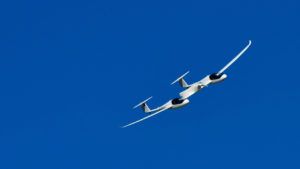 Associated with DLR’s fuel cell work from the very beginning, the University of Ulm’s Professor Dr. Josef Kallo founded H2FLY, along with four colleagues, in 2015. The company’s aim remains the progression of hydrogen fuel cell technology to a point where it becomes a viable alternative for everyday commercial aviation. By far the most visible evidence of the company’s goal remains the HY4 flying testbed. Intended, like the Antares DLR-H2 before it, purely for technology proving and demonstration it mounts an electric propulsion unit on its centre wing section ahead of the fuel cell installation.
Associated with DLR’s fuel cell work from the very beginning, the University of Ulm’s Professor Dr. Josef Kallo founded H2FLY, along with four colleagues, in 2015. The company’s aim remains the progression of hydrogen fuel cell technology to a point where it becomes a viable alternative for everyday commercial aviation. By far the most visible evidence of the company’s goal remains the HY4 flying testbed. Intended, like the Antares DLR-H2 before it, purely for technology proving and demonstration it mounts an electric propulsion unit on its centre wing section ahead of the fuel cell installation.
Although H2FLY is making serious progress, CEO Kallo is realistic not only about the challenges of hydrogen-fueled flight, but also the test and approval process. Considering the latest iteration of the company’s hydrogen fuel cell system he says, “By 2025 we will be using it to prove functionality and demonstrate a degree of qualifiability, but it will take an additional three to four years of testing after first flight to achieve a qualified powertrain.”
His choice of words emphasizes H2FLY’s position as a developer of hydrogen powertrains rather than hydrogen-powered aircraft. “We are looking at the combination of hydrogen storage, fuel handling, the fuel cell and its cooling system and thermal management and power model development, or how we route power to the electric motors,” he continues. “We don’t develop motors, we rely on a partner for those, but we do integrate them into our powertrain. For a future commercial aircraft we needed an OEM partner and for that we now have Deutsche Aircraft [and the Dornier 328]. We adapted the HY4 because it was the easiest way to create a testbed, but we don’t want to build any more aircraft.”
Kallo reveals that he began working on methods for integrating hydrogen powertrains in 2006. As a result, he has a clearly defined philosophy for how best to test and employ them.
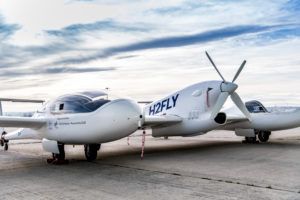 “I believe it is best to stick with a classic, high efficiency, proven aircraft design with a maximum of two engines or motors. The wing should be forgiving in an engineering sense, conservative but efficient, leaving the developmental focus on the challenges, including how to integrate the cooling aerodynamically, and how to integrate the electric power system up to 2,000V. If all that can be accomplished within the boundaries of the highly efficient Dornier 328 wing, then we can begin envisioning an entirely new aircraft.
“I believe it is best to stick with a classic, high efficiency, proven aircraft design with a maximum of two engines or motors. The wing should be forgiving in an engineering sense, conservative but efficient, leaving the developmental focus on the challenges, including how to integrate the cooling aerodynamically, and how to integrate the electric power system up to 2,000V. If all that can be accomplished within the boundaries of the highly efficient Dornier 328 wing, then we can begin envisioning an entirely new aircraft.
“There are experts with 20 years or more experience of maintaining and modifying the aircraft, so the first logical step towards a commercial application is to build a really well integrated hydrogen powertrain Dornier 328. Anything else is an expensive waste of time.”
As an airliner, the Dornier 328 was introduced in the early 1990s with a nominal 30-passenger capacity. This means that not only is the airframe well understood and supportable, but it also has plenty of cabin space for flight test engineers and their equipment.
Power perception

The challenge of developing and integrating a hydrogen fuel cell powertrain fires Kallo’s enthusiasm, but he is cognizant of the wider issues surrounding the carriage of hydrogen fuel and the perception of public and pilots alike – most of us, on hearing the word hydrogen immediately think highly explosive gas.
“We can learn,” Kallo says. “I have two examples to prove it. Ten or 12 years ago I believed it would never be possible to fly more than one person in a hydrogen fuel cell powered plane and that was when we were using an optimized motor glider. But now HY4 weighs 1.5 tonnes, it has a heavy-duty wing and although it’s still highly efficient it is closer to a powered light aircraft than a motor glider. I never thought we would be able to power such an aircraft.
“Second, I’m a pilot and I was trained that if you cannot hear the engine something is badly wrong! Then I began flying electric aircraft and my first three or four trips were really scary. There was no noise or vibration from the engine, no whine from a turbine, so I had to learn a new way of sensing the aircraft’s condition, getting a feel for what it was doing. You look to other stimuli. The world outside feels brighter because there is no sound. You can speak with passengers sitting alongside you without a headset.
“It becomes familiar and convenient very quickly. In the same way, my hope is to show that we have hydrogen working safely and then demonstrate to experienced people what that means.”
In July, Kallo and his team were busy installing a fuel cell system and liquid hydrogen storage onto the HY4 for a new round of trials. “We’ll run ground tests until the end of the year,” Kallo explains. “We’ve already performed shaker, acceleration, mechanical and other tests without issues, but we know we face challenges on the control side because the CAN bus is not working properly or suffering from electromagnetic interference, or maybe some sensors aren’t working properly.
“The basic technology works well, but the auxiliaries, all the small pieces of off-the-shelf technology need improving and customizing to meet our base component needs. Once we’ve completed that effort, I’m very confident the system will work.”
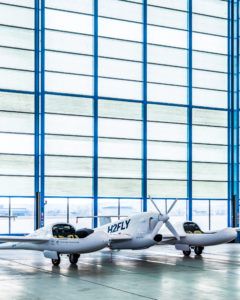
When it comes to flight testing, powertrain data is gathered from the HY4’s Diehl Aerospace integrated modular avionics system and an additional hard drive. It is also sent via 4-SIM telemetry, over LTE connection to a ground server for downloading in near real time. During laboratory trials, data is stored directly onto a hard drive and a server and is also available to engineers on site and working remotely. The hydrogen storage, fuel cell, power management, control and delivery and cooling systems are all fully instrumented, along with the inverters and motors. Data on aircraft performance is also gathered.
Critically, H2FLY’s final powertrain solution will need to meet regulatory requirements, but since hydrogen fuel cells and even electric power remain novelties, the pioneering company is obliged to take a hand in creating the regulations to which it must ultimately adhere. Kallo says, “We have a special relationship with the Slovenian CAA [Civil Aviation Agency], which has been very straight and firm, but at the same time open to long, face-to-face discussions over individual components or challenges. I think this is the way to move forwards.”
The Slovenia authority recently awarded H2FLY its fourth permit to fly and Kallo acknowledges: “Every time we had a mix of major and minor changes. In all cases they wanted to understand the development process behind why we are doing what we are doing. They cannot do the work themselves, but they are well equipped to understand it.”
Expanding team
So far, H2FLY has achieved huge progress with a remarkably small team. “Our flight demonstrator and integrator team is nine people, but we’re ramping up,” Kallo enthuses.
Since a major private capitalization round in April 2021 the company has added more than 50 new staff.
“By the end of 2022 we’ll employ around 75 people. Most of them will focus on upscaling the technology,”
Kallo says.
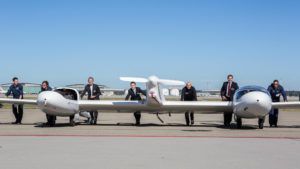 Working closely with the Slovenia CAA, H2FLY is already leading the way in creating future regulatory standards for hydrogen-powered aircraft. Now the focus is on upscaling the technology to suit commercially viable machines and supporting infrastructure is a critical element in that equation. Most obviously this means developing and testing fuel storage and handling, but safety, emergency procedures on the ground and in the air, maintenance and spares support must also be addressed. Again, H2FLY is obliged to be a pioneer.
Working closely with the Slovenia CAA, H2FLY is already leading the way in creating future regulatory standards for hydrogen-powered aircraft. Now the focus is on upscaling the technology to suit commercially viable machines and supporting infrastructure is a critical element in that equation. Most obviously this means developing and testing fuel storage and handling, but safety, emergency procedures on the ground and in the air, maintenance and spares support must also be addressed. Again, H2FLY is obliged to be a pioneer.
Again, Kallo is pragmatic. “Stuttgart to Friedrichshafen was our first cross country flight. We filled up with hydrogen in Stuttgart and landed with almost 65% remaining. Around 15km from Stuttgart a thunderstorm tracked in quickly. We had to fly almost back to Friedrichshafen and land at an airfield with no suitable infrastructure. It took 24 hours to arrange delivery of gas. We used that time to educate the fire service and the airport’s management about how to handle the aircraft and its fuel.
“It was extremely difficult, but in the end we built a small refueling station, worked to understand our requirements with fire and rescue and the airport management team, and ultimately managed to safely refuel the aircraft and take off.
“I believe that gaining this level of acceptance and familiarity at every airfield is just a case of money and regulation. We calculate that for Europe to adopt large hydrogen-fueled aircraft capable of routes around 2,000km, the cost of infrastructure and education at every major airport, plus aircraft development, will total around half the cost of building sufficient renewable energy SAF plants to satisfy European needs.”
Kallo says H2FLY’s hydrogen fuel cell architecture is scalable from 300kW, suitable for a six-seater aircraft, up to 3MW by 2030, applicable in a two-motor configuration to a 60-seat regional aircraft. He also sees application of hydrogen as an aviation power source, helped along the way by H2FLY’s pioneering work in gaining acceptance.
“We see hydrogen electric fuel cell driven aircraft employing fans or propellers over ranges up to 4,000km and aircraft burning hydrogen in gas turbines covering ranges up to 8,000km,” Kallo adds.


